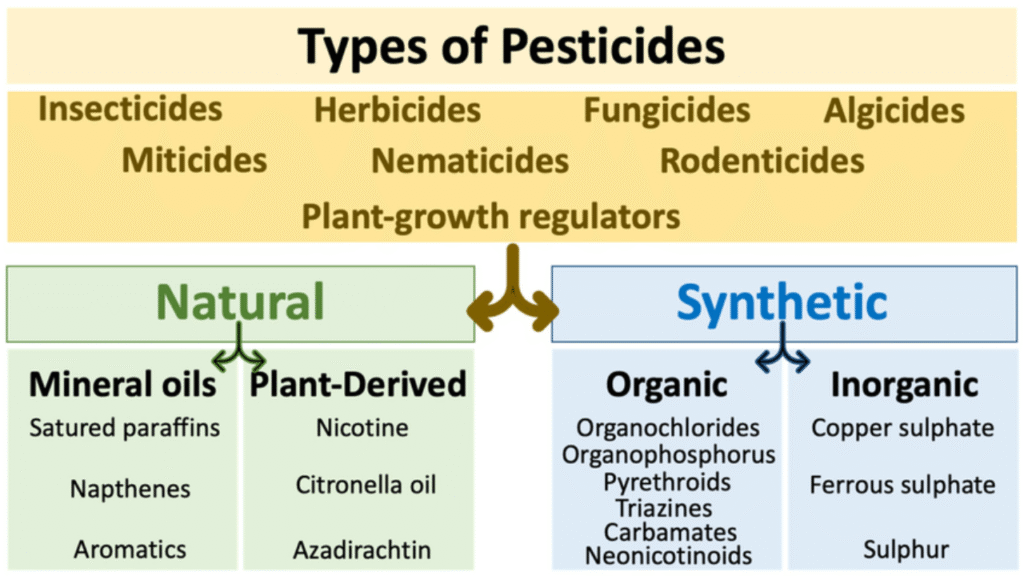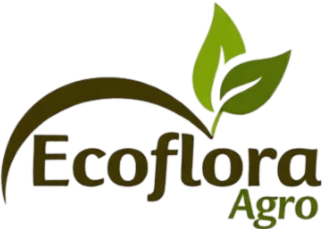
As global agriculture evolves to meet the twin demands of productivity and sustainability, one question continues to ignite debate: Are natural pesticides truly better for the environment than synthetic ones? With increasing attention on eco-friendly farming, residue-free food, and the climate impact of industrial agriculture, it’s crucial to understand the environmental implications of both pesticide types.
This article dives deep into the environmental comparison between natural and synthetic pesticides, highlighting their impacts on soil, water, biodiversity, and long-term ecological balance.
What Are Natural and Synthetic Pesticides?
Natural (Botanical/Biological) Pesticides
These are substances derived from natural sources such as plants, bacteria, or minerals. Examples include neem oil, pyrethrum, garlic extract, diatomaceous earth, and Bacillus thuringiensis (Bt). Most are biodegradable, work via physical or biochemical action, and are considered part of organic farming practices.
Synthetic (Chemical) Pesticides
These are man-made compounds, often derived from petrochemical processes, designed to kill or repel pests. Common types include organophosphates, carbamates, pyrethroids, and neonicotinoids. These are widely used in industrial agriculture due to their potency and broad-spectrum effectiveness.
Key Environmental Impact Factors
1. Persistence in the Environment
- Natural pesticides typically degrade quickly and do not accumulate in soil or water.
- Synthetic pesticides may persist for weeks, months, or even years, contributing to long-term contamination.
2. Impact on Soil Health
- Natural pesticides tend to preserve microbial diversity and soil structure.
- Synthetic chemicals can disrupt beneficial soil organisms and lead to reduced fertility over time.
3. Water Pollution Risk
- Runoff from synthetic pesticides is a major source of freshwater pollution.
- Natural pesticides, due to their rapid breakdown, pose significantly less threat to aquatic ecosystems.
4. Effect on Non-Target Species
- Natural options are often more selective, targeting specific pests.
- Many synthetic pesticides are broad-spectrum, killing pollinators, beneficial insects, and even birds.
5. Resistance Development
- Synthetic pesticides often lead to resistance over time, requiring higher doses or new chemicals.
- Resistance from natural pesticides is less common but still possible with overuse.
Detailed Comparison Tabl
| Feature | Natural Pesticides | Synthetic Pesticides |
|---|---|---|
| Source | Plants, bacteria, minerals | Man-made chemicals |
| Environmental Persistence | Low – degrade rapidly | High – can remain in environment |
| Toxicity to Non-Target Species | Generally low | Often high |
| Risk of Resistance | Lower (but still possible) | Higher due to repeated exposure |
| Impact on Soil Health | Supports microbial life | May disrupt soil organisms |
| Water Pollution Risk | Low due to biodegradability | High due to runoff and residue |
Case Examples
Case 1: Neem Oil vs Chemical Sprays in Vegetable Farming (India)
Smallholder farmers in Maharashtra replaced chemical insecticides with neem-based sprays. Within two seasons, they observed fewer pest outbreaks, improved pollination, and better soil moisture retention, with zero runoff issues in nearby streams.
Case 2: Pyrethroids and Bee Decline (Europe)
Studies across European farmlands link neonicotinoid and pyrethroid use to drastic declines in honeybee populations. In contrast, fields using botanicals like garlic or chili extracts maintained pollinator presence year-round.
Case 3: Bt Corn and Ecological Balance (USA)
Bt corn—a crop genetically modified to produce a natural bacterial toxin—reduced the need for external spraying. This significantly lowered chemical load in surrounding habitats while maintaining pest control.
Summary Table: Environmental Impact Scorecard
| Environmental Factor | Natural Pesticides Score | Synthetic Pesticides Score |
|---|---|---|
| Soil Health | ✅ High | ❌ Low |
| Aquatic Ecosystem Safety | ✅ High | ❌ Low |
| Biodiversity Protection | ✅ High | ❌ Low |
| Resistance Risk | ⚠️ Moderate | ❌ High |
| Decomposition Speed | ✅ Fast | ❌ Slow |
| Human Health Risk | ✅ Low | ❌ High |
Limitations and Considerations
While natural pesticides offer clear environmental advantages, they are not without challenges:
- Short shelf life and UV sensitivity
- Need for more frequent applications
- Limited availability and standardization
- Less efficacy on certain high-impact pests
However, when integrated into sustainable farming systems like Integrated Pest Management (IPM), natural pesticides can dramatically reduce ecological damage while keeping crops protected.
The Path Forward
Eco-conscious agriculture does not demand abandoning all pesticide use—it calls for rethinking the tools and techniques we use to protect our food systems. Natural pesticides, when used correctly, offer a powerful bridge between tradition and innovation. They respect the rhythms of nature while offering practical solutions for farmers.
As consumer demand for cleaner, safer food grows, and as ecosystems face mounting pressure from climate change and pollution, the move toward plant-powered pest control is not just idealistic—it’s inevitable.
3 Best One-Line FAQs
Q1: Are natural pesticides completely harmless to the environment?
No, but they generally degrade faster and are less harmful than synthetic pesticides when used properly.
Q2: Do natural pesticides work as well as synthetic ones?
They can be effective, especially when integrated with other sustainable practices, though they may require more frequent use.
Q3: Can switching to natural pesticides help save pollinators?
Yes, natural pesticides are usually less toxic to bees and other beneficial insects, helping protect pollinator populations.

